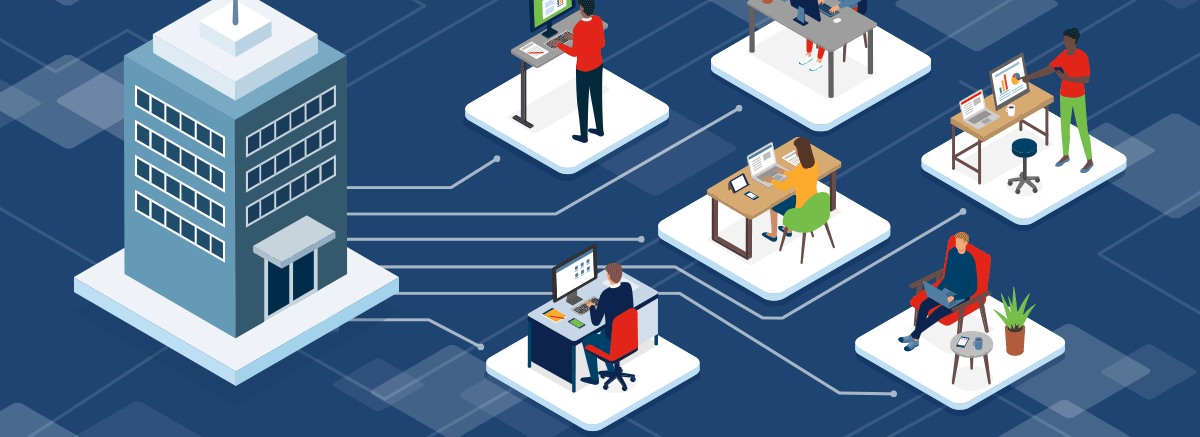“We are at a unique point in time where we have proven that technology can help us achieve virtually anything,” Cisco CEO Chuck Robbins said at Cisco Live. “And all of us have a role to play, as we shape the future of the world … Because in this future, technology will truly be at the heart of it.”
Speaking in a Cisco Live keynote address, Robbins established an important theme for the event: Despite the hardships and tragedies of the past year, CIOs, business leaders, and workers are looking to a future that will be more flexible, inclusive, and secure than ever before.
That’s because, when the pandemic arrived, the future of work came with it. And it revealed just what’s possible as we continue to innovate.
“From being in the epicenter of the pandemic, every CIO I know is talking about the same two things,” Cisco CIO Jacqui Guichelaar, said in a CIO roundtable discussion. “The first is how do we take advantage of cloud to accelerate around the business changes that we need to face into. And the second one is the future of work, because that has dramatically changed forever.”
Throughout the event, Cisco customers spoke of their own experiences in using cloud and other technologies to innovate fast solutions.
Dr. Sam Amirfar, CIO of the Brooklyn Hospital Center, faced huge challenges, especially early in the pandemic. But he and his team adapted quickly.
“Cloud computing alleviates a lot of the stresses on our systems,” he said in a roundtable discussion. “We were able to develop applications and programs, implement change, adapt, and improve a lot easier on cloud.”
The old normal is gone forever
Technology isn’t the only thing changing in response to the disruptions of the past year. As new ways of working extended across industries over the past year, a higher level of empathy — along with better communication and transparency — entered company cultures.
“In my role I saw a need from our employees for us to focus on well-being at a greater level than we ever have before,” Fran Katsoudas, Cisco’s EVP and chief people, policy and purpose officer, said in an appearance at the CNBC@Work Summit. “And I think the other big ah-ha was that they were coming to us to get their questions answered on COVID, and they wanted to hear from their company. It really created a new discussion with us for our people.”
This evolution will only increase as hybrid work models become the norm.
“The world has changed dramatically in the past year,” said Dr. Amirfar. “So, the more comfortable you are with change, and the better communications you have within your team and your organization, the better you will adapt and have a better future — to both your employees, your customers/patients, and to the overall context of your industry.”
Of course, comfort with change depends on great technology.
“We’re focused on this next challenge of redesigning our infrastructure for a new hybrid work model in a cloud-first world,” said Todd Nightingale, Cisco’s SVP and general manager for enterprise networking and cloud, in a keynote address. “Our infrastructure has to have the insights to tell us what’s really happening, what our users are really experiencing, whether they’re working from home or in an office. And it has to have powerful automation that allows us to change our infrastructure, in the click of a button .”
“This is the agility,” he added. “We all need digital agility that combines power and simplicity. It’s going to matter most for schools, businesses, and governments around the world for years to come.”
Fantastic demo by @tnight to show how our technology comes together with the #CXCloud dashboard to help customers continue to enable an inclusive pandemic recovery. #CiscoLive @Cisco pic.twitter.com/TKsxSgc6yi
— Chuck Robbins (@ChuckRobbins) March 30, 2021
Digital agility is also about choice. And many workers and students will never want to return to the rigid models that dominated pre-pandemic.
“We know definitively that the future of work is going to be hybrid,” Jeetu Patel, Cisco’s SVP and general manager for security and collaboration, said in a keynote address. “Sometimes people are going to work from the office. Sometimes people are going to work from home. And sometimes in places in between. But one thing is clear: From wherever you were working, Webex will enable secure inclusive collaborative experiences.”

The seamless, secure, inclusive work experience
Security — whether in the office or in cyberspace — is one part of making the work experience as good as it can be. And its key to enabling technology to do what it does best: unleashing the full power of human talent and potential.
As Katsoudas said, “we believe that digital can humanize the enterprise.”
That means reaching everyone in an organization — and beyond.
“Your employees, your students, or your customers need to feel safe and secure just as much as they need to feel included and productive,” said Dan Wiggins, vice president of industry solutions at Cisco, who led a Future of Work roundtable discussion. “They need to feel immersed in the organization’s environment, regardless of their physical location. Experiences matter. In education, it’s immersive learning, independent of location. In retail, it’s customer experience in both physical and digital environments. And in manufacturing, it’s about speed and agility.”
Dr. Amifar echoed that sentiment. Patients and healthcare workers will demand a better, more flexible experience all around, as we begin to move past the pandemic.
“In a world where everything is so interconnected,” he said, “remote working is going to be a larger option in the future. So, employees have choices and patients have choices. And you need to focus on patient experience. We have to make sure they get equitable, healthy, safe, efficient, modern care.”
###
We welcome the re-use, republication, and distribution of “The Network” content. Please credit us with the following information: Used with the permission of http://thenetwork.cisco.com/.
